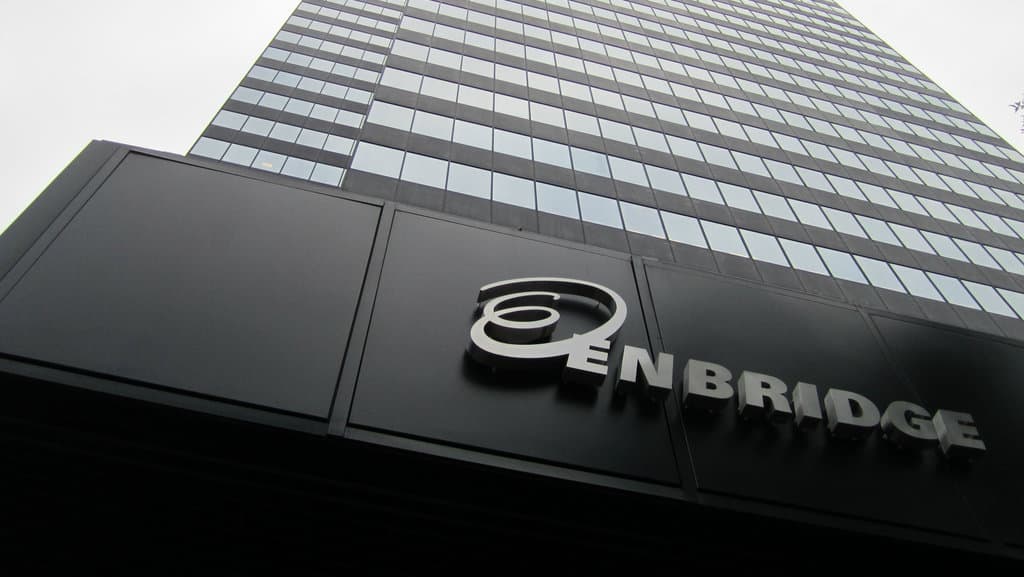Enbridge Inc. (TSX:ENB)(NYSE:ENB) shares dipped nearly 2.6% on Wednesday, which might have been triggered by a tweet from an environmental organization saying that Enbridge was seizing their assets after the organization lost a case to the company but failed to pay the court costs. It wasn’t long before Enbridge stopped the seizing-assets action.
Unfortunately, there will always be conflicts between pipeline companies and environmental groups. However, I believe this issue will be temporary.
Near the market close, there was some buying action on the stock, which indicates the stock may be an attractive buy on the dip.

About Enbridge
Enbridge’s history goes as far back as 1949. Since then, the company has built a diversified portfolio consisting of crude oil, natural gas, and renewable assets.
After merging with Spectra Energy, Enbridge has become North America’s largest energy infrastructure company.
The company generates roughly 47% of its cash flow from liquids transportation, 34% from gas transportation, and 17% from gas-distribution utilities. And it has been sharing its cash flow generously with its shareholders via a growing dividend.
Dividend growth
Enbridge has paid a dividend for more than 64 years. And it has increased its dividend for 21 consecutive years. Seldom do we see stocks that have increased their dividends at a double-digit rate for a long time. Enbridge has achieved a dividend-per-share growth rate of 13-19% in the one-, three-, five-, and 10-year periods.
It’s not a matter of if Enbridge can continue its dividend growth, but more a matter of how fast Enbridge can grow its dividend.
Management aims to pay out 50-60% of available cash flow as dividends. Some of the cash flow will go to reducing the company’s debt level.
Enbridge’s debt-to-EBITDA (earnings before interest, taxes, depreciation, and amortization) ratio is estimated to be 5.5 this year, and the goal is to reduce that ratio to less than five, which should be achieved by 2019.
This year through 2019, Enbridge has a $27 billion commercially secured capital program, which will boost cash flow when the projects go into service.
Notably, the $7.5 billion Line 3 replacement project, which is expected to go online in 2019, is the company’s largest project yet, which implies complexity and higher risk compared to its smaller projects.
On top of the $27 billion capital program, Enbridge also has $48 billion of potential projects, which could add to growth. With these projects in mind and the fact that Enbridge’s cash flow is largely (+95%) stable and predictable, management believes the company can grow its dividend per share by 10-12% through 2024.
Should you buy Enbridge on the dip?
Enbridge offers a yield of ~4.8%, which is compelling coming from a large, good-quality company with an S&P credit rating of BBB+, which is better than investment grade.
That said, risks can materialize as Enbridge implements its capital program. So, interested investors might consider building their position over time instead of buying in a lump sum.







